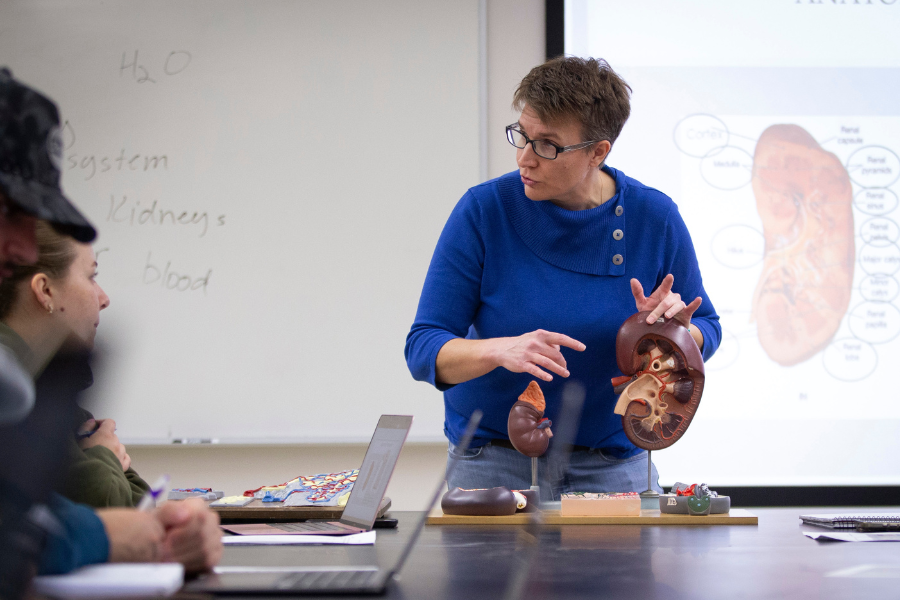Baltimore invests $500,000 to improve childhood education, increase access to child care programs – CBS News

Report on Baltimore’s Investment in Early Childhood Education and Alignment with Sustainable Development Goals
Executive Summary: Investment and Core SDG Alignment
The City of Baltimore has announced a strategic investment of $500,000 to enhance early childhood education. This initiative directly addresses several United Nations Sustainable Development Goals (SDGs), with a primary focus on ensuring inclusive and equitable quality education.
- Primary Goal: To improve access to and enrollment in quality Pre-K and childcare programs, directly supporting SDG 4 (Quality Education), specifically Target 4.2, which aims to ensure all children have access to quality early childhood development, care, and pre-primary education.
- Management: The grant funding will be managed by the Fund for Educational Excellence.
Strategic Objectives for Achieving SDG 4 and SDG 10
The funding is allocated to specific, data-driven actions designed to close the early education gap and reduce systemic inequalities.
- Data Collection: Gather comprehensive data on childcare access and enrollment to inform policy and resource allocation.
- Inclusive Support: Enhance care for young people with special needs, a key component of SDG 10 (Reduced Inequalities).
- Enrollment Campaigns: Implement readiness campaigns and provide navigators to assist parents in finding suitable programs, ensuring equitable access for all communities.
Addressing Educational Disparities in Baltimore
The initiative targets significant educational disparities within the city, a critical step toward achieving SDG 10 (Reduced Inequalities).
- Identified Gap: Annually, 800 to 1,000 children in Baltimore enter kindergarten with no prior educational experience.
- Long-Term Impact: Research indicates that a kindergarten-ready child is nearly five times more likely to be reading at grade level by third grade and is more likely to graduate.
- Targeted Intervention: The program places a special focus on neighborhoods that have faced historical disinvestment, such as Cherry Hill, to ensure resources are directed where the need is greatest.
Infrastructure Development and Sustainable Communities (SDG 11)
A key component of the plan involves urban planning and infrastructure development to create a sustainable environment for early education.
- Repurposing Properties: The city’s Planning Department has been directed to identify vacant or underutilized properties that can be repurposed as Pre-K and childcare facilities.
- Community Revitalization: This strategy of repurposing mixed-use properties contributes to SDG 11 (Sustainable Cities and Communities) by creating essential social infrastructure and revitalizing urban spaces.
Socio-Economic Impact and Multi-Goal Contributions
The initiative’s impact extends beyond education, contributing to broader socio-economic goals.
- Gender Equality (SDG 5): By analyzing and reducing the cost and accessibility barriers of childcare, the initiative aims to alleviate the disproportionate burden placed on mothers and female caregivers, promoting gender equality.
- Poverty Reduction (SDG 1): Increasing access to affordable childcare enables parents, particularly single mothers, to enter and remain in the workforce, contributing to poverty reduction.
- Policy and Governance: The Baltimore City Council’s Education and Youth Committee will hold hearings to analyze the cost and accessibility of childcare, ensuring a comprehensive policy approach to achieving these development goals.
Analysis of Sustainable Development Goals in the Article
1. Which SDGs are addressed or connected to the issues highlighted in the article?
The article on Baltimore’s investment in early childhood education addresses several Sustainable Development Goals (SDGs). The primary focus is on education, but the initiative also touches upon reducing inequality, promoting gender equality, and creating sustainable urban communities.
- SDG 4: Quality Education: This is the most prominent SDG in the article. The entire initiative, including the $500,000 investment, is aimed at improving access to and the quality of early childhood education and Pre-K programs to ensure children are “kindergarten-ready.”
- SDG 10: Reduced Inequalities: The article explicitly mentions the goal of closing the “early childhood education gap,” particularly in “neighborhoods that have faced intentional disinvestment for generations, like here in Cherry Hill.” This directly targets inequality in access to essential services for children from different socioeconomic backgrounds.
- SDG 5: Gender Equality: The article notes that the burden of childcare disproportionately affects “mothers and, in many cases, grandmothers.” By increasing access to affordable and quality childcare, the city’s plan helps to alleviate the burden of unpaid care work, which is a key component of promoting gender equality and women’s economic empowerment.
- SDG 11: Sustainable Cities and Communities: The plan to “identify vacant or underutilized properties in the city that could be repurposed as Pre-K and child care facilities” relates to this goal. It focuses on making cities more inclusive and sustainable by repurposing existing urban infrastructure to provide essential social services for residents.
2. What specific targets under those SDGs can be identified based on the article’s content?
Based on the initiatives described, several specific SDG targets can be identified:
- Target 4.2: “By 2030, ensure that all girls and boys have access to quality early childhood development, care and pre-primary education so that they are ready for primary education.” The article’s central theme is the city’s effort to “expand access to and increase awareness of quality Pre-K child care programs” to close the gap for children who “enter kindergarten with no prior educational experience.”
- Target 10.2: “By 2030, empower and promote the social, economic and political inclusion of all, irrespective of age, sex, disability, race, ethnicity, origin, religion or economic or other status.” The focus on disinvested neighborhoods aims to ensure that children in these areas are not left behind, promoting their social and future economic inclusion by providing a strong educational foundation.
- Target 5.4: “Recognize and value unpaid care and domestic work through the provision of public services, infrastructure and social protection policies…” The investment in childcare facilities and programs is a provision of public services that directly supports parents and caregivers, particularly women, who are “overburdened by child care.”
- Target 11.3: “By 2030, enhance inclusive and sustainable urbanization and capacity for participatory, integrated and sustainable human settlement planning and management in all countries.” The directive for the Planning Department to repurpose vacant properties for childcare facilities is a direct example of sustainable urban planning that integrates social needs into the city’s development.
3. Are there any indicators mentioned or implied in the article that can be used to measure progress towards the identified targets?
Yes, the article mentions or implies several indicators that can be used to track progress:
-
For Target 4.2:
- Enrollment and Access Data: The grant funding will be used to “gather data on child care access and enrollment in Baltimore.” This directly corresponds to measuring participation rates in early childhood education.
- Number of Children without Prior Education: The article states that “every year in Baltimore, 800 to 1,000 young people enter kindergarten with no prior educational experience.” A reduction in this number would be a key indicator of success.
- Kindergarten Readiness Rates: The mayor’s emphasis on making children “kindergarten-ready” implies that the city will track this metric as a measure of the program’s effectiveness.
-
For Target 10.2:
- The “Early Childhood Education Gap”: While not a formal UN indicator, the article frames the problem as a “gap.” Progress could be measured by tracking and comparing kindergarten readiness and enrollment rates between disinvested neighborhoods like Cherry Hill and the city average.
-
For Target 11.3:
- Number of Repurposed Facilities: A direct and measurable indicator is the number of “vacant or underutilized properties in the city that could be repurposed as Pre-K and child care facilities.”
-
For Target 5.4:
- Cost of Child Care: The city council plans to hold hearings to “analyze the cost of child care.” Tracking the average cost of childcare for families over time would serve as an indicator of whether the burden on caregivers is being reduced.
4. Summary Table of SDGs, Targets, and Indicators
| SDGs | Targets | Indicators Identified in the Article |
|---|---|---|
| SDG 4: Quality Education | 4.2: Ensure access to quality early childhood development, care, and pre-primary education. |
|
| SDG 10: Reduced Inequalities | 10.2: Empower and promote the social and economic inclusion of all. |
|
| SDG 5: Gender Equality | 5.4: Recognize and value unpaid care work through the provision of public services. |
|
| SDG 11: Sustainable Cities and Communities | 11.3: Enhance inclusive and sustainable urbanization and planning. |
|
Source: cbsnews.com
What is Your Reaction?
 Like
0
Like
0
 Dislike
0
Dislike
0
 Love
0
Love
0
 Funny
0
Funny
0
 Angry
0
Angry
0
 Sad
0
Sad
0
 Wow
0
Wow
0




















































.jpg.webp?itok=0ZsAnae9#)


























